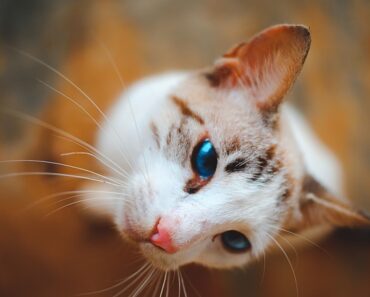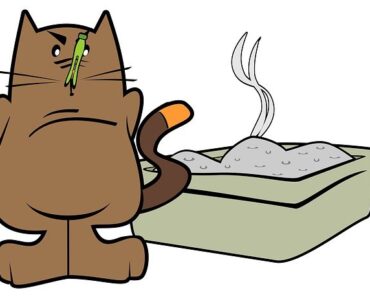It is estimated that 1 to 5% of cats suffer from asthma. However, there is a good chance that this prevalence is underestimated. Asthma can occur at any age, although young adults between 1 and 8 years of age are most often affected. On the other hand, it seems that Siamese cats are genetically predisposed to this pathology. It is a disease that can have important consequences in the short term, notably respiratory difficulties, but also in the long term, because it can modify the architecture of the lungs, and cause lesions.

What causes asthma in cats?
Asthma is a reversible obstruction of the bronchi. In cats, as in humans, the underlying mechanisms are not yet fully understood, but it appears to be an allergic reaction. In response to an allergen present in the ambient air, frequently dust mites, the muscles in the bronchial wall contract: this is called a bronchospasm. In addition, an inflammation develops: the bronchial wall becomes edematous and mucus, whose production is stimulated, accumulates. All this leads to obstruction of the bronchial tubes, and hinders the circulation of air in the lungs. Exhalation becomes difficult, and the cat is forced to make an effort and contract its muscles to expel air from its lungs. Asthma can be seasonal, especially when the offending allergen is a pollen, for example. However, this is quite rare.
What are the symptoms of feline asthma?
Asthma is characterized by difficulty breathing, coughing or wheezing. The cat is depressed and the signs worsen with stress or exertion. Most often, asthma presents itself in a chronic form interspersed with acute attacks. In this case, there are great similarities with human asthma. Acute attacks can be quite dramatic: the cat lies down with its head tilted forward, its mouth ajar, and shows great difficulty in breathing. In this situation, try to remain calm and avoid any undue stress that would aggravate your cat’s condition. This is still an emergency that requires prompt consultation with your veterinarian.
There is currently no test to diagnose asthma with certainty. At rest, between attacks, or at the time of consultation, the cat may not show any symptoms, which adds to the difficulty of diagnosis. On auscultation of the airways, crackles or wheezes may be heard. Sometimes a slight thickening of the bronchial tubes can be seen on chest x-rays, but in some asthmatic cats these may be quite normal. Other tests may provide useful information to the veterinarian to help differentiate asthma from other diseases, such as bacterial, parasitic, or fungal bronchopneumonia.
The diagnosis of asthma is based on the owner’s description of the symptoms, the exclusion of other diseases that would cause similar symptoms, and the response to treatment.
What is the treatment for cat asthma?
Treatment depends very much on the severity of the disease and the frequency of attacks, which vary greatly from one asthmatic cat to another. In all cases, it is impossible to obtain a complete and definitive cure. Nevertheless, medical follow-up is important, because if left untreated, asthma can lead to certain complications. The goals of treatment are to improve the cat’s quality of life and to prevent complications and acute attacks. This is accomplished by decreasing mucus secretion, reducing the inflammatory response, and dilating the bronchial tubes.
The asthmatic cat needs a treatment outside the attacks, adapted to the intensity of its symptoms. This treatment most often involves bronchodilators, as well as corticosteroids to fight inflammation. These two treatments act in synergy. They can be administered either systemically or locally through an inhalation chamber, sometimes several times a day.
Inhalation chambers consist of a mask that is held against the cat’s nose, and a compartment in which a metered dose spray containing the medication to be inhaled is placed. It is necessary to ensure that the cat breathes normally into the mask, which must be held in place for about ten breaths. The use of aerosol therapy is very interesting because the active substances are deposited directly into the airways. The use of a local administration route also reduces the side effects of corticosteroids. However, when asthma is severe, this is not always enough and oral tablets may be necessary. Antibiotics will be prescribed as needed, only in case of bacterial superinfection.
On the other hand, on a daily basis, the cat must be prevented from certain factors likely to favor the appearance of attacks or even to trigger them: stress, irritating substances such as smoke, dust and aerosols.






